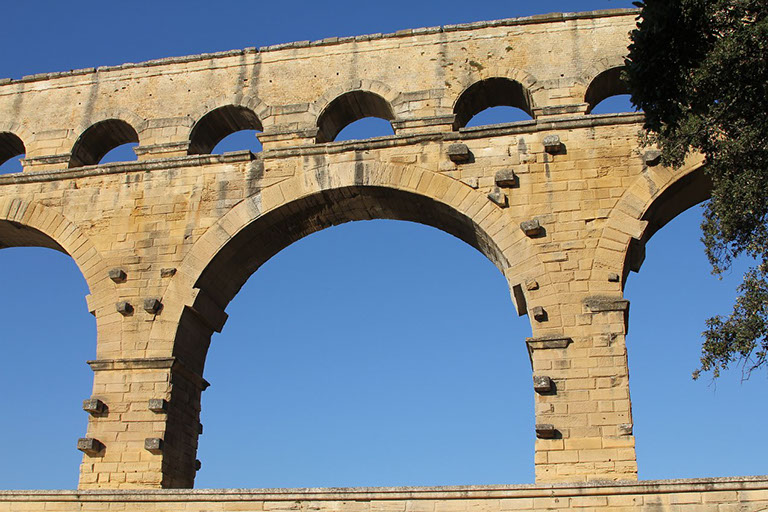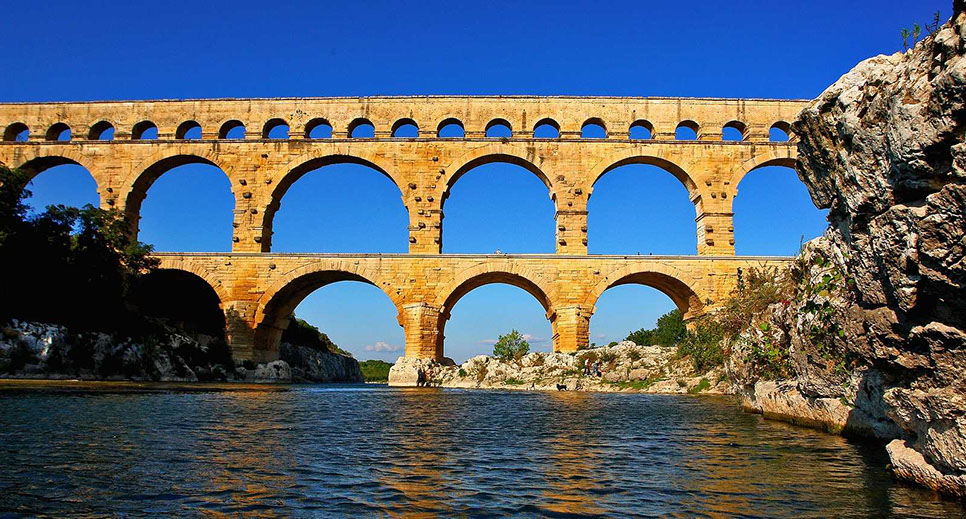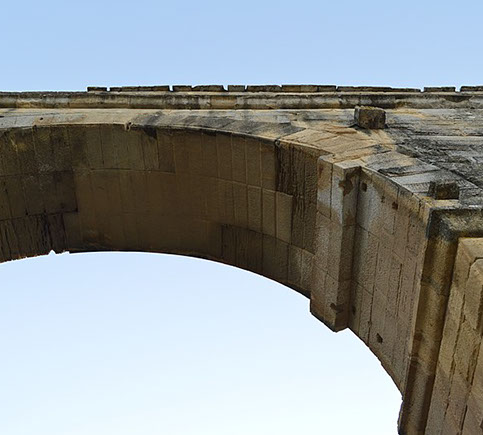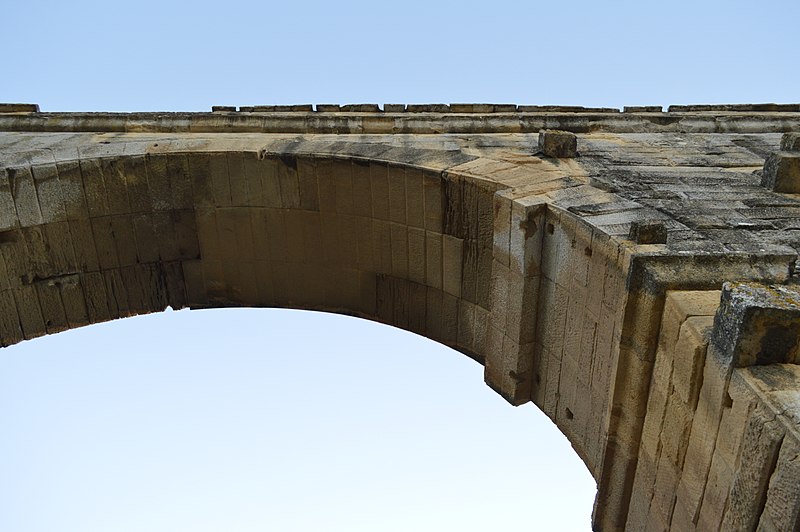
It was long believed that the Gard bridge was built around 19 BC, however, recent excavations suggest that it was built in the first century AD. Its construction is attributed to Augustus' son-in-law, Marco Vipsanio Agrippa.
Designed to carry the water through the small valley of the Gardon, it was part of an aqueduct of about 50 km that carried the water from the births near Uzès to the Roman city of Nemaususus (now Nîmes).
The entire aqueduct had a gradient of 34 cm/km (1/3000), descended only 17 m along its entire length and carried 20 million litres of water daily.
It was long believed that the Gard bridge was built around 19 BC, however, recent excavations suggest that it was built in the first century AD. Its construction is attributed to Augustus' son-in-law, Marco Vipsanio Agrippa.
Designed to carry the water through the small valley of the Gardon, it was part of an aqueduct of about 50 km that carried the water from the births near Uzès to the Roman city of Nemaususus (now Nîmes). The entire aqueduct had a gradient of 34 cm/km (1/3000), descended only 17 m along its entire length and carried 20 million litres of water daily.
It was built completely without mortar. The stones of the aqueduct, some of which weigh up to six tons, are held together by iron clamps. The masonry was lifted into place by pulleys driven by many men. A complex scaffolding was built to support the aqueduct while it was being built. The façade still has the marks of its construction in the form of protuberances by which it was attached to the scaffolding and easels on the pillars that supported the semicircular frames or shoring on which the arches were built. It is believed that it took about three years to build, and that 800 to 1000 workers participated in the works.
From the 4th century onwards, maintenance was neglected and sediments began to clog the duct. In the 9th century it became useless and people began to use its stones for their own purposes. However, most of the Gard bridge remains intact.
Until the 18th century the aqueduct was used as a bridge to facilitate traffic on foot across the river. The second level pillars were thinned to make more room for traffic, but this threatened the stability of the structure. In 1702 the pillars were restored to their original thickness to safeguard the aqueduct. In 1743 a new bridge was built next to the arches on the lower level, so that road traffic could cross there. The aqueduct was restored in the 18th century as it was a tourist attraction and was restored again during the reign of Napoleon III in the mid 19th century.
The extraordinary quality of the bridge masonry made it a must for masonry travellers on their traditional tour of the country, many of whom left their names inscribed on the stone. The marks made by the original workers, which indicate where the stones were to be placed, are also kept: for example, FRS II (meaning frons sinistra II).
The Pont du Gard has been a World Heritage Site since 1985. Unesco points out that the Pont du Gard was built shortly before the Christian era to allow the Nîmes aqueduct (which is almost 50 km long) to cross the Gard River. The Roman architects and hydraulic engineers who designed this bridge, which rises to almost 50 meters and is at three levels - the longest measuring 275 m - created a technical as well as artistic masterpiece.
In 1998, the Pont du Gard was affected by a flood that caused serious damage to the region. The road leading to the bridge and the nearby facilities were badly damaged, although the aqueduct itself did not seriously deteriorate.
The French Government sponsored a redesign project in cooperation with local authorities, UNESCO and the EU, which was completed in 2000. The area around the aqueduct was made pedestrianized and the facilities for visitors were improved, including the construction of a museum. The project was criticised for its cost (32,000,000 €) and for the loss of beauty of the surrounding landscape. Another consequence was that walking through the duct was no longer allowed. However, the new plan ensures that the area near the Bridge is now much quieter due to the ban on motorised traffic, and the new museum provides the visitor with a richer historical context.
The Gard bridge is one of the five most visited tourist attractions in France, with 1.4 million visitors in 2001 and is included in the list of Grand Site National.





BRIDGE OF GARD
HISTORY











